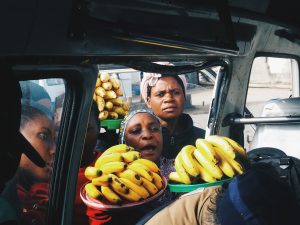Blog
Zero chance for zero hunger?
Written by Joyce Murerwa
May 7, 2020
One of three living in chronic food insecurity. More than two million regularly relying on food handouts. During floods and droughts, this figure doubles. Last year, this was the harsh reality for Kenyans. In 2020 – a year that will go down in history book as a year of gloom – even more people will go hungry.
Before the arrival of Covid-19, the Government of Kenya had worked hard to achieve food and nutrition security for its people. The number of people grappling with food insecurity was slowly on its way down. The country was on the right track, but the pandemic threatens to derail progress. In a world paralysed by the pandemic, Sustainable Development Goal 2 of ending hunger by 2030 seems more and more elusive.
Food and nutrition insecurity affect the 75% of Kenyans who live in rural areas particularly hard. Many are unable to meet the minimum dietary requirements to sustain a healthy and productive life. Stunting is widespread in Kenya. Low-technology farming, high food prices, natural disasters and climate change resulted in stagnant agricultural production, even before the pandemic hit. As is often the case in times of crisis, the most vulnerable in Kenya look set to pay the highest price of the pandemic.
USING DATA TO TACKLE HUNGER
As a Technical Lead on Nutrition and Non-Communicable Diseases with AMREF Health Africa, I am working to improve health in Kenya. In November 2019, I participated at LIDC’s short course Evaluation: From Innovation to Impact. The course inspired me to work for lasting change. The knowledge, skills and confidence I gained have helped me work to strengthen the capacity of Civil Society Organisations. I work to generate and use data to achieve tangible advocacy outcomes. By monitoring the progress of health service delivery teams and the work of community leaders, my organisation has been able to share new knowledge with community members. They use this information to challenge why some basic services have not been provided. It also provides the foundation to campaign for assistance to withstand income shocks. Promoting accountability and involvement of the community helps address food and nutrition insecurity.
STRENGTHENING LOCAL CAPACITY
In my experience, working at the local level can lead to better outcomes. Planning at a local level and bringing together people from different government departments and institutions help strengthen local capacities. This leads to sustainable interventions.
My organisation has worked with health professionals to create coded maps. The key feature of these maps is that they disintegrate data to the local administrative level. They give us an overview over the burden of malnutrition, food insecurity, communicable diseases and other key health and nutrition indicators. By using this data, we are able to keep a compelling scorecard and create a cadence of accountability. This new way of working helps us create more sustainable health, food and nutrition security interventions. And it helps us target interventions to where they are the most needed.
LOOKING AHEAD
A big challenge for food security, nutrition and health care systems is the scarcity of resources and competing demands for services. Personal gains by the legislators can sometimes dictate how they allocate scarce resources.
We are hampered by the fact that the benefits of improved health take time to become apparent. There are no quick fixes. It can take years for communities to understand and appreciate gains achieved. We need to do more to educate people about the role data plays in influencing key policies.
Moving forward, we will work more closely with the Parliamentary Committee on Health. The Committee can help drive the health, food and nutrition security agenda forward. We plan to establish thematic Technical Working Groups within the national and sub-national Monitoring and Evaluation departments. This will help us scale up research studies so we can continue to generate evidence-based policy briefs.
At the time of writing this blog post, the impact of Covid-19 is yet to be fully understood and addressed. But its impact on food supply chains and Kenya’s struggling healthcare system can already be felt. The future is more uncertain now than ever before. Nevertheless, I will be able to use the skills I gained during the LIDC short course to help finding solutions to emerging challenges.
 The author of this blog post is Joyce Murerwa. She works as a Technical Lead, Nutrition and NCDs with AMREF Health Africa. In November 2019, she attended LIDC’s annual short course ‘Evaluation: From Innovation to Impact.’ Joyce was awarded a bursary by 3ie to attend LIDC’s short course.
The author of this blog post is Joyce Murerwa. She works as a Technical Lead, Nutrition and NCDs with AMREF Health Africa. In November 2019, she attended LIDC’s annual short course ‘Evaluation: From Innovation to Impact.’ Joyce was awarded a bursary by 3ie to attend LIDC’s short course.
The short course will in 2020 be organised online.

